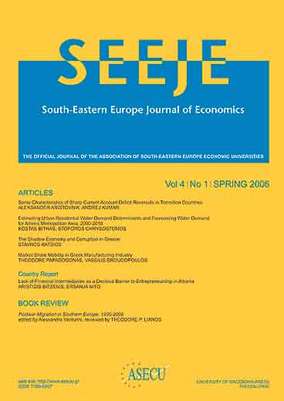Some characteristics of sharp current account deficit reversals in transition countries
Part of : SEEJE ; Vol.4, No.1, 2006, pages 9-45
Issue:
Pages:
9-45
Author:
Abstract:
This article examines current account deficit adjustments in selected transition countries in the 1990s and at the beginning of the 21st century. For this purpose we primarily investigate the main characteristics of sharp current account reversals in Albania, Armenia, Belarus, Bosnia and Herzegovina, Kyrgyz R., Lithuania, Moldova, Poland, Slovenia and Ukraine. Results suggest that restrictively defined reversals seem to be closely related to factors such as domestic savings, real export growth, international reserves and external indebtedness as well as to budget and trade balances. While the role of exchange rate depreciation seems ambiguous, we found that sharp current account reversals are systematically associated with a gradual GDP growth slowdown in the pre-reversal period and with robust GDP growth impetus afterwards.
Subject (LC):
Keywords:
current account balance, reversals, macroeconomic, variables, eastern Europe, former Soviet Union
Notes:
Περιέχει σημειώσεις, διαγράμματα, παράρτημα, πίνακες και βιβλιογραφία, We are grateful to annonymous referres, whose comments helped us in improving the content and expostition of the paper. Earlier version of the paper was presented at ‘4th International Symposium Economy & Business 2005: Economic development and growth’ in Bourgas, Bulgaria. Comments from conference participants led to the current version of the paper. The paper is also part of Aleksander Aristovnik’s Ph.D. research titled ‘Current Account Sustainability in SelectedTransition Countries’. Any remaining errors and ambiguities are our responsibility., JEL Classification: C33, F32, F34




